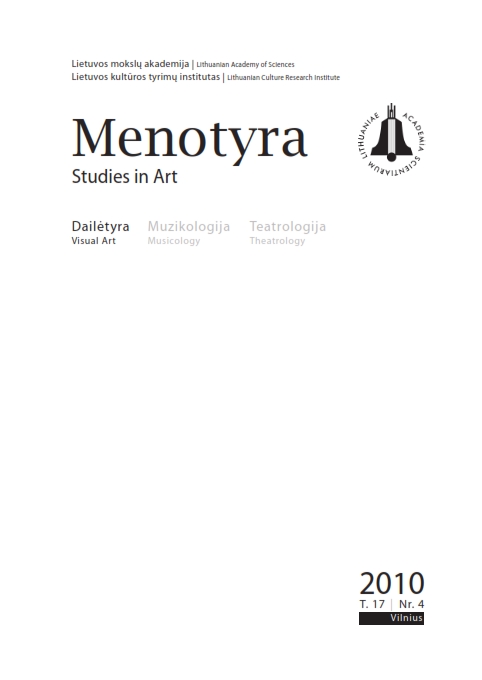Bandymai atstatyti Radvilų rūmus Vilniuje po maskvėnų okupacijos
Attempts to reconstruct the Radziwiłł Palace in Vilnius after the Moscowian occupation
Author(s): Lina BalaišytėSubject(s): Christian Theology and Religion, Architecture, Visual Arts, Local History / Microhistory, 17th Century
Published by: Lietuvos mokslų akademijos leidykla
Keywords: Bogusław Radziwiłł; Krzysztof Dobkiewicz; Vilnius; nobleman’s residence; building craft; craftsmen;
Summary/Abstract: The author of the current article discusses the course of reconstruction works of the Radziwiłł Palace at the Vilnius city gate after the Moscowian occupation in the middle of the 17th century while referring to the letters of Krzysztof Dobkiewicz, the administrator of Bogusław Radziwiłł’s court in Vilnius. The letters written to Radziwiłł from 1662 till 1667 reveal the period of reconstruction that has not yet received any attention in historiography.The restoration of the palace began shortly after the retreat of the Moscowian army. Intensive restoration works took place in 1663–65. At that time, the central and corner pavilions as well as the galleries were covered, the vaults and columns of several rooms were refurbished, and fireplaces were built. Before 1667, renovation of the palace garden began.Bogusław Radziwiłł apparently did not seek to restore the former luxury of the palace. He needed a practical residence for accommodation. However, as his administrator reminded him in his letters, the status of the Biržai Radziwiłłs obliged the nobleman to create an imposing building.One of the greatest problems of restoration was the lack of good craftsmen in the city. The demand for craftsmen working in construction – stonemasons and carpenters – was high after the war. For the restoration of such distinguished buildings as palaces, craftsmen arriving from abroad were mostly hired. Their qualifications in decorating works were more highly esteemed. The same craftsman could work for several noblemen at the same time. Vilnius-based craftsmen were invited to work in other noblemen’s residences and even at the ruler’s court. Craftsmen arriving from abroad often applied new forms of work organization and remuneration.
Journal: Menotyra
- Issue Year: 17/2010
- Issue No: 4
- Page Range: 333-350
- Page Count: 18
- Language: Lithuanian

